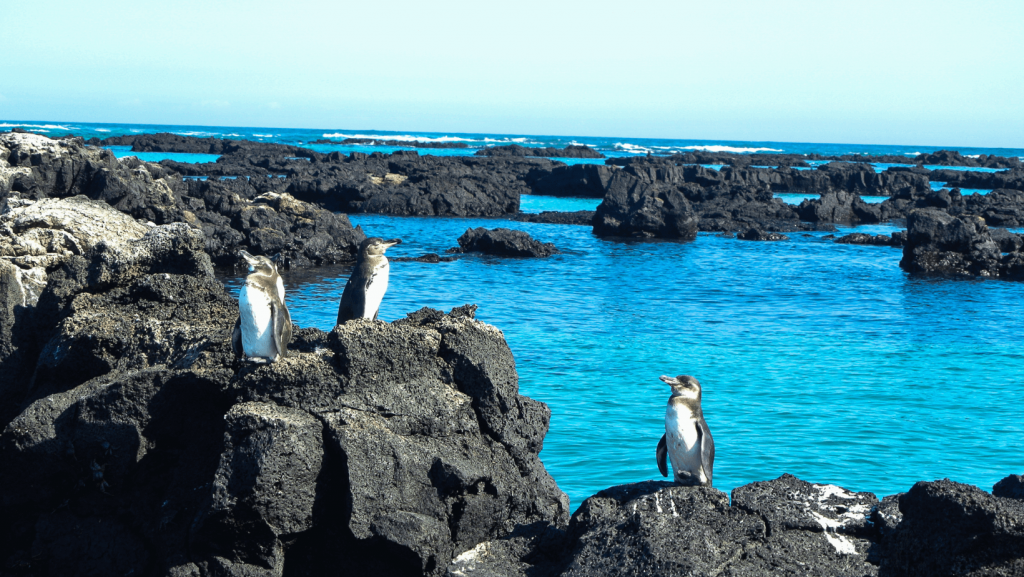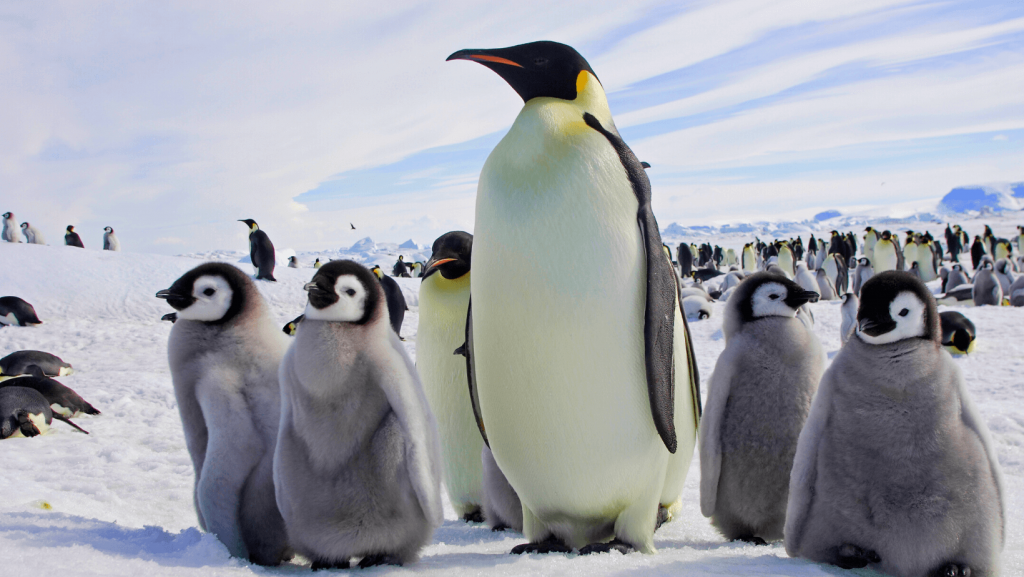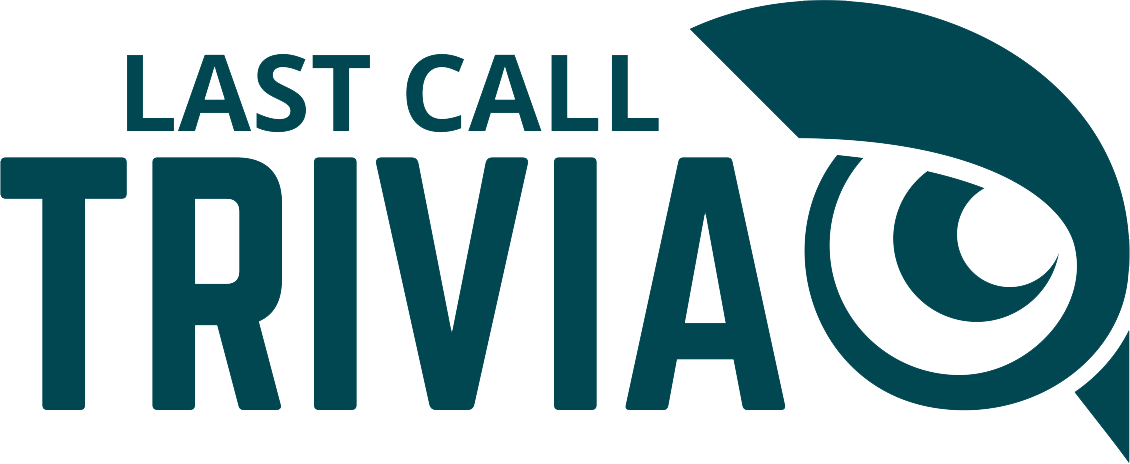
Penguin Basics
There are 18 different penguin species, each of which varies in shape and size. The smallest species is the blue, or fairy, penguin, which reaches a height of about 14 inches and a weight of about 2 pounds. The largest species is the emperor penguin, which can reach a size of up to 45 inches and 90 pounds.
While the sizes of the species can vary widely, the coloring of the animals is more uniform. Nearly all have black bodies and white bellies. This protective coloring allows them to hide from predators like orcas and leopard seals while swimming. Additional coloring is rare among species, but some do feature points of color, including red beaks or feet, yellow brow tufts, or orange and yellow on the head, neck, and breast.
Penguins can’t fly, but their stiff flippers, webbed feet, and sleek shape make them excellent swimmers. They can swim at speeds of about 15 miles an hour, and to increase their speed, they often “porpoise,” or leap out of the water as they swim. Most of their lives are spent in the ocean as they do almost all of their hunting for krill, squid, and crabs underwater.

Penguin Spotting
Penguins are commonly associated with the cold, southern climate of Antarctica. A number of species make their homes around this area, including the emperor, adélie, chinstrap, and gentoo. These animals are able to thrive in the frigid environment thanks to a thick layer of blubber and tightly packed, oily feathers which are ideal for colder temperatures.
Those that live in polar regions also have a convenient way to navigate on land. As penguins spend much of their time in the water, they aren’t quite as agile on land. They walk with an upright stance and often waddle, hop, or run with their bodies angled forward. However, polar penguins are able to move on land quickly by “tobogganing,” or sliding across the ice on their stomachs and pushing forward with their feet.
Despite their association with Antarctica, there are also several species that live in warmer climates, where they breed on islands. One of the most well-known of these is the Galapagos penguin which lives as far north as the equator. It’s one of the many unique species found in the Galapagos Islands, an area famous for its diverse assortment of plants and animals.

Social Structure
Most penguins live in large groups – or colonies – sometimes with as many as hundreds of thousands of individuals. In colder climates, the birds will often huddle close together both for warmth and as a defense against predators.
Penguins are known for their tendency for monogamy. Most stay with the same mate for many years and lay only one or two eggs at a time. They come ashore to lay their eggs and the parents take turns incubating the eggs. The only exception is the emperor penguin, in which case the male exclusively handles incubation. Similarly, both parents share the duties of feeding and protecting the chicks after they have hatched.
When the chick grows large enough to be separated from its parents, it will join 100 or more of its contemporaries in a nursery group or crèche. These groups are sometimes guarded by a few adults while the parents forage at sea. After returning with food, the parent calls its chick from the crèche and is able to distinguish it from the others by voice and appearance. The growth of the young bird from hatching to complete independence varies by species from about two months (blue penguin) up to 14 months (king penguin).
Weekly Trivia
Enter your guess to reveal the answer.

